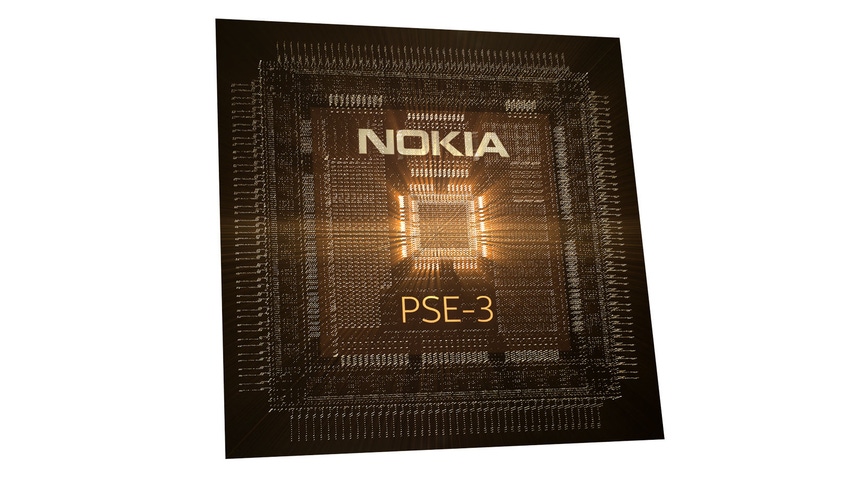Networking vendor Nokia is increasingly starting to look like a chipset company, with its third major chip launch in the past year.
March 6, 2018

Networking vendor Nokia is increasingly starting to look like a chipset company, with its third major chip launch in the past year.
This one is intriguingly called the Photonic Service Engine 3 (PSE-3), because it’s all about pushing optical network capacity to its theoretical limits. If you think that doesn’t sound quite science fiction enough then get a load of this: the PSE-3 chipset is the first coherent digital signal processor to implement probabilistic constellation shaping (PCS).
As you would expect Nokia has been working on PCS for some time, and this chip would seem to be the culmination of its efforts. The technology is designed to push the Shannon Limit, which defines the maximum theoretical capacity of a communications channel. It generates wavelengths that are more resilient to noise thus, claims Nokia, increases capacity by 65% while reducing power by 60%, which seems significant.
“This is a breakthrough in how we can maximize the performance of optical networks and, at the same time, vastly simplify operations,” said Sam Bucci, Head of Optical Networks for Nokia. “The Photonic Service Engine 3 is the culmination of a decade of research and first-hand experience building the largest, highest capacity optical networks in the world.
“By introducing this extreme and yet remarkably simple programmability, our customers can now maximize the capacity of every link in their network, whether that’s 10 km, 10,000 km or beyond. They will be able to keep their costs under control while handling the huge bandwidth demands that video, cloud, and soon 5G will be throwing at them.”
“Spark and Nokia have a proud partnership delivering optical innovation in New Zealand and ensuring our network stays ahead of market demand,” Rajesh Singh, GM Value Management and Procurement, Spark New Zealand. “Building on our 2012 introduction of 100G transport and 200G in 2017, the new Nokia Bell Labs powered PSE-3 technology will allow Spark to plan towards 400G and 1Tb services supporting the significant predicted traffic demands of 5G, video, business services and IoT. We’re very excited about the world leading capability of the Nokia PSE-3 to help us meet those demands and at the same time reducing the cost per transported bit.”
This latest launch, when grouped with last year’s FP4 chip announcement, would appear to be giving Nokia a strong offering in the fixed line market with its own silicon as a significant USP. Looking back at MWC, while Nokia had plenty to say about 5G radio, its single biggest differentiator appears to be its fixed line portfolio, to which this latest announcement is a further contribution.
In other news Igor Leprince, who headed up the Nokia Global Services silo for a while, seems to have paid the price for his unit’s underperformance. Pausing only to hand over the reins to his previous head of sales – Sanjay Goel – Leprince will be updating his LinkedIn profile and pursuing other opportunities at the end of this month.
Assuming a lack of sales was a contributing factor to Leprince’s sudden interest in the broader vocational marketplace, replacing him with the person most responsible for those sales, such as they were, is an intriguing move. But what do we know and we wish Goel all the best.
About the Author(s)
You May Also Like








.png?width=300&auto=webp&quality=80&disable=upscale)


_1.jpg?width=300&auto=webp&quality=80&disable=upscale)


.png?width=800&auto=webp&quality=80&disable=upscale)